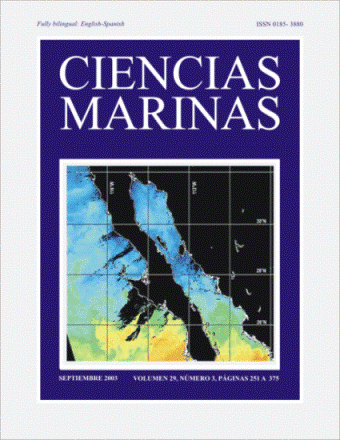Interaction between the California sea lion and the artisanal fishery in La Paz Bay, Gulf of California, Mexico
Main Article Content
Abstract
Information about California sea lion prey and the artisanal fishery catch in the area of the Los Islotes sea lion rookery, in northeastern La Paz Bay, México, was examined to estimate potential overlap and competition between these consumers. Sea lions there consume about 435 t annually, with peak consumption in winter. The artisanal fishery captures about 730 t of bony fish annually, with an increase in summer. Based on a five-year study, sea lions preyed on 76 fish species, but in terms of relative importance (RI), 35% of these was represented by only five species, of which only one has regional commercial value. Principal fishery targets comprised 28 species in four families, representing 76.2% of the total capture. Of these, the remains of only two species appeared in sea lion scats, and of them, only the spotted sand bass, Paralabrax maculatofasciatus, has significant commercial value, but it is poorly represented as sea lion prey (< 5% RI). Despite the limited overlap with fishery target species, the Los Islotes population exhibited the highest entanglement index (7–9%) of all sea lion colonies studied in Mexico. All sex/age categories of sea lions showed similar entanglement indices, with the entangled fraction approximately proportional to the total population for three surveys in different years. The data suggest that most animals become entangled by accident. Entanglement is probably due to the combined effect of extensive gillnet deployment in the bay and overlap in the areas where sea lions feed and fishermen operate.
Downloads
Article Details
This is an open access article distributed under a Creative Commons Attribution 4.0 License, which allows you to share and adapt the work, as long as you give appropriate credit to the original author(s) and the source, provide a link to the Creative Commons license, and indicate if changes were made. Figures, tables and other elements in the article are included in the article’s CC BY 4.0 license, unless otherwise indicated. The journal title is protected by copyrights and not subject to this license. Full license deed can be viewed here.

